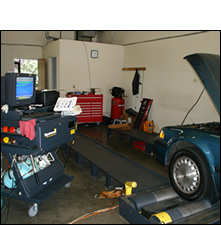 |
||||||||||||||||||||||||||||||||
|
|

|
|
|
During low vacuum the MAP sensor assumes the engine's throttle is in some degree open, meaning you've stepped on the pedal. It relays this information to the ECU. The ECU, in turn, sends commands to the fuel injectors, or carburetor, to increase fuel delivery.
A defective MAP sensor will not report the correct information to the ECU, thus disturbing air/fuel ratio. Usually when the ECU senses a defective MAP sensor it will learn to ignore its data, and rely on preset values, and other sensors such as the Throttle Position Sensor (TPS), and Engine Coolant Temperature (ECT) Sensor; Fuel delivery will not be as accurate and high CO may result. 4. Defective Throttle Position Sensor (TPS) - Obviously a very important emissions sensor; the TPS relays information regarding the position of the air intake system's throttle plate. The throttle plate, located after the engine air filter and before the intake manifold controls the amount of air entering the combustion chambers. It is usually manipulated by the gas pedal via a cable. On late model vehicles the throttle plate may be controlled electronically. A defective throttle position sensor will confuse the ECU into thinking the vehicle's operator is demanding more or less fuel, when neither is really neccessary. Most often a faulty TPS will cause high CO, as an engine's ECU always prefers to send more fuel rather then less, in an effort to avoid a lean fuel mixture and subsequently higher engine temperatures. 5. Defective Engine Coolant Temperature (ECT) Sensor - Low engine temperature requires more fuel. When the ECU is unable to determine what the engine's accurate temperature is, it will not adjust fuel delivery properly; resulting in high CO. As explained above, the Engine Control Computer prefers to send more fuel rather then less to avoid a lean fuel mixture.
|